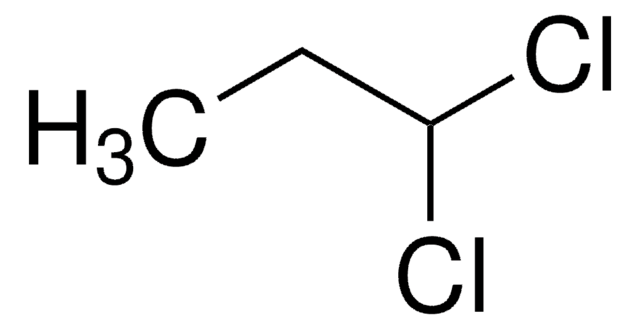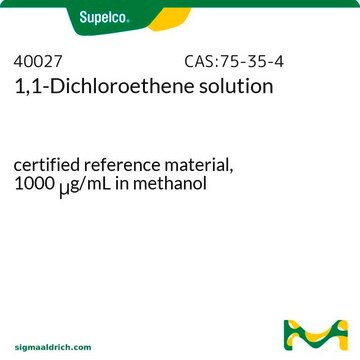40012
1,1-Dichloroethane solution
certified reference material, 5000 μg/mL in methanol
About This Item
Produtos recomendados
grau
certified reference material
TraceCERT®
linha de produto
TraceCERT®
Certificado de análise (CofA)
current certificate can be downloaded
embalagem
ampule of 1 mL
concentração
5000 μg/mL in methanol
técnica(s)
HPLC: suitable
gas chromatography (GC): suitable
aplicação(ões)
environmental
formato
single component solution
temperatura de armazenamento
2-8°C
InChI
1S/C2H4Cl2/c1-2(3)4/h2H,1H3
chave InChI
SCYULBFZEHDVBN-UHFFFAOYSA-N
Procurando produtos similares? Visita Guia de comparação de produtos
Aplicação
Outras notas
Informações legais
Palavra indicadora
Danger
Frases de perigo
Declarações de precaução
Classificações de perigo
Acute Tox. 3 Dermal - Acute Tox. 3 Inhalation - Acute Tox. 3 Oral - Flam. Liq. 2 - STOT SE 1
Órgãos-alvo
Eyes
Código de classe de armazenamento
3 - Flammable liquids
Classe de risco de água (WGK)
WGK 2
Ponto de fulgor (°F)
51.8 °F - closed cup
Ponto de fulgor (°C)
11 °C - closed cup
Equipamento de proteção individual
Eyeshields, Faceshields, Gloves
Escolha uma das versões mais recentes:
Já possui este produto?
Encontre a documentação dos produtos que você adquiriu recentemente na biblioteca de documentos.
Protocolos
US EPA Method TO-17: GC Analysis of Volatiles on VOCOL® after Collection/Desorption using Air Toxics Tube
Nossa equipe de cientistas tem experiência em todas as áreas de pesquisa, incluindo Life Sciences, ciência de materiais, síntese química, cromatografia, química analítica e muitas outras.
Entre em contato com a assistência técnica









